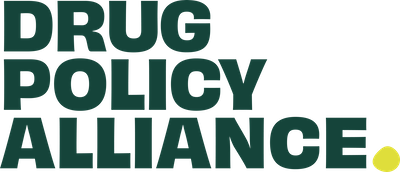Add Your Name: Researchers & Clinicians Against Drug-induced Homicide Laws
Overdose death rates in the United States have more than doubled over the past decade, surpassing motor vehicle accidents as the leading cause of injury-related death in the country.
Policymakers are understandably alarmed at the overdose crisis with which they are now confronted. Fentanyl, a potent opioid, has heightened these concerns (although many people do not know their drug contains fentanyl and are not seeking fentanyl). The public is calling for help and solutions. Some elected officials and prosecutors are introducing or employing punitive, counter-productive measures in a misguided effort to reduce overdose fatalities. In particular, they are considering bills or using laws allowing prosecutors to charge people who provide the drugs that ultimately contribute to an overdose death with homicide.
There is no existing evidence, however, that further criminalizing opioid sales by allowing a charge of murder or manslaughter will achieve the goal of reducing overdose fatalities. Rather, drug-induced homicide laws are actually more likely to harm the very people they are seeking to protect and to further reduce access to the critical services that do have the potential to save lives.
As researchers, academics, and clinicians, we oppose “drug-induced homicide” laws for the following reasons.
1. These laws discourage people from seeking help during overdose events for fear of prosecution for manslaughter or murder. Thirty-five states have passed some form of “Good Samaritan” laws offering limited immunity during an overdose precisely because the fear of prosecution is understood to deter people from getting the help they need. The most common reason people cite for not calling 911 is fear of police involvement.
2. These laws have no real deterrent effect. Presumably, the intent of punishing people who supply drugs with incredibly harsh sentences like murder or manslaughter is to deter others from also supplying drugs that could lead to an overdose. However, increased arrests or increased severity of criminal punishment for drug-related offenses do not, in fact, result in less use or sales. Indeed, the United States National Institute of Justice’s official position is that increased prison sentences do not deter crime and that prison sentences for offenders exacerbate recidivism, facts supported by broad bodies of research. Furthermore, increased sentences most directly and negatively impact low-income communities of color for whom the opioid crisis is and has been most pressing.
3. These laws target the wrong point of intervention. There are a host of factors that contribute to an overdose death, including tolerance, poly-drug use, circumstances of consumption, and familiarity with the substance – none of which can be controlled by the person who supplied the drugs. Indeed, 77% of prescription opioid overdose deaths and 67% of heroin overdose deaths are the result of mixing opioids with other drugs or alcohol.
4. These laws punish the very people they are intended to help – people who use opioids. Many of the drug-induced homicide laws already in existence as well as those being proposed are touted as intended to punish so-called “professional” drug sellers. But, the distinction between “seller” and “user” is artificial. Experts who have studied drug markets have found that many sellers are people who are addicted and selling to support their own drug use. Moreover, the drug-induced homicide laws are often drafted so broadly that they encompass drug delivery or aiding and abetting drug use (even if between friends or people who are using drugs together). As a result, the people being punished are often the very people that the drug-induced homicide laws are actually intended to protect – people who are at risk of death due to a substance use disorder.
5. These laws drive people away from getting the help they need and increases risk of overdose. Rather than diminishing the harms of drug misuse, criminalizing people who sell and use drugs amplifies the risk of fatal overdoses and diseases, increases stigma and marginalization, and drives people away from needed treatment, health, and harm reduction services.
Instead of further criminalizing people, we need to increase education, prevention, and harm reduction strategies to reduce overdose deaths. These include expanding access to the life-saving medicine, naloxone, and its associated training; improving fact-based drug education for young people that includes overdose prevention; enacting legal protections that encourage people to call for help for overdose victims; training people how to prevent, recognize and respond to an overdose; increasing access to behavioral therapies; and implementing safe consumption facilities. We also need to expand access to life-saving, medication-assisted treatments, including methadone and buprenorphine, especially in non-urban areas.
